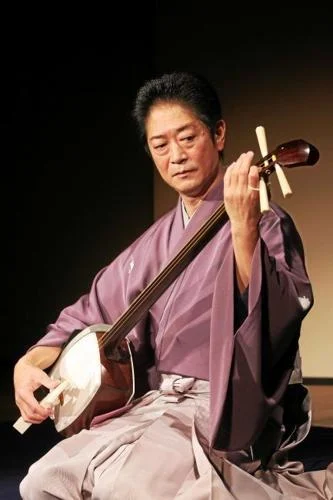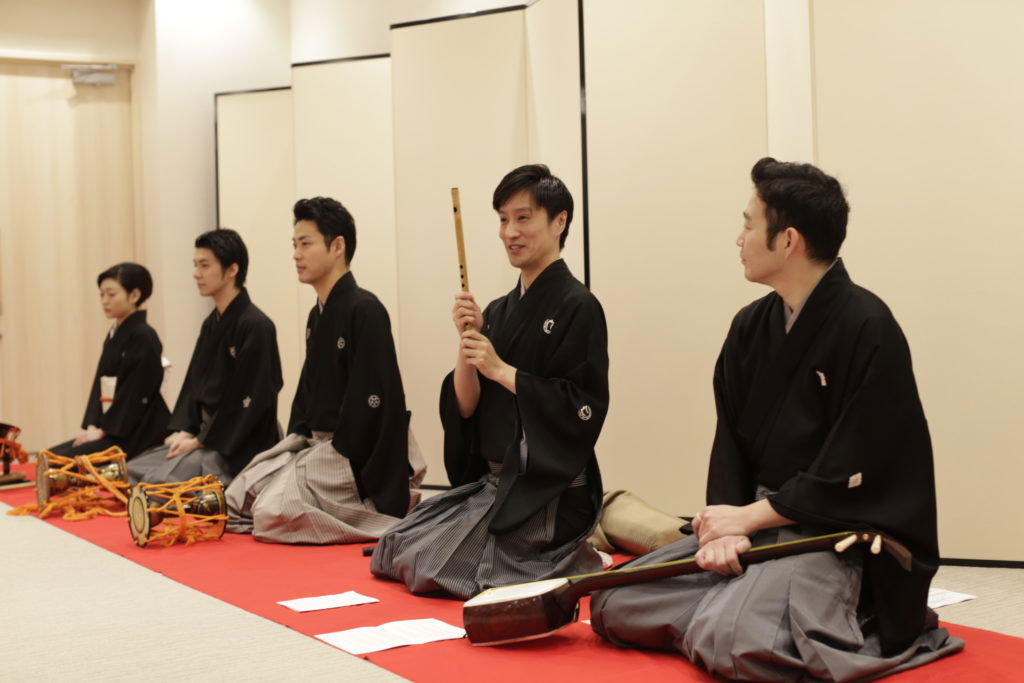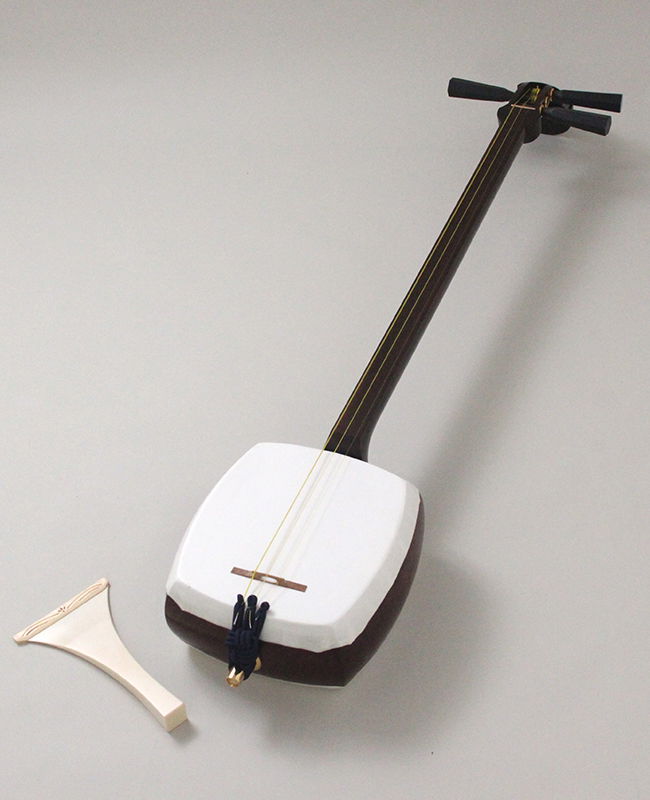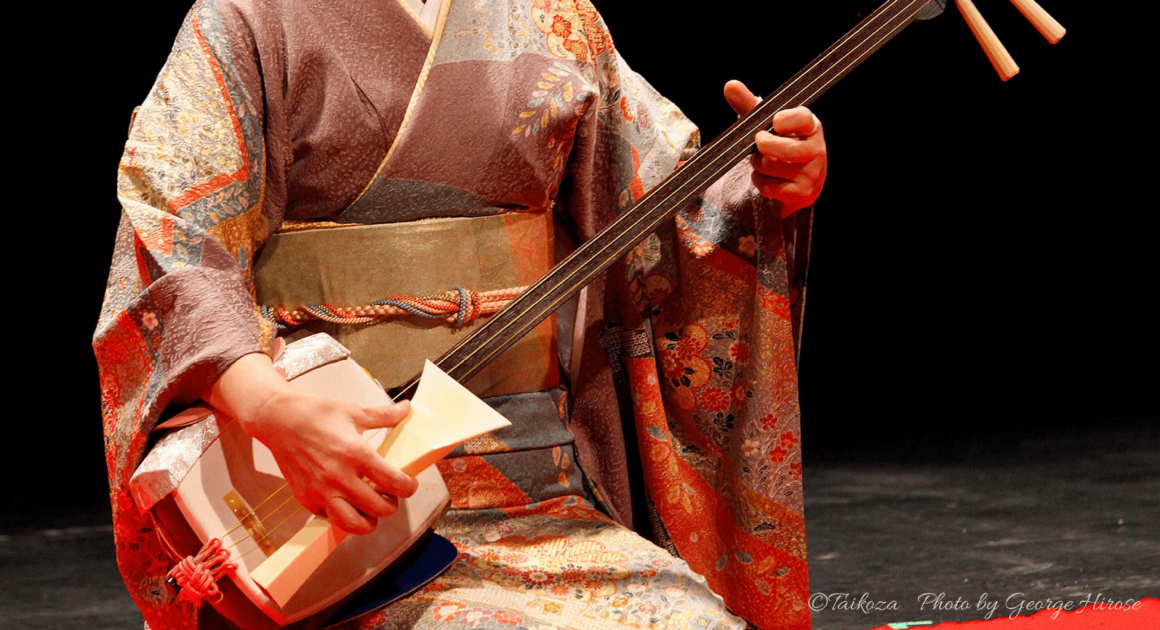Music and Soundscape

Kabuki productions create a rich soundscape using live performances from vocalists as well as various instruments both traditional and modern. Many types of drums and other percussion are used to accompany melody, create sound effects, and create sounds of nature. Popular melody instruments used are the flute and the shamisen, a lute-like traditional Japanese instrument.

Pictured above: kabuki musicians
Kabuki musicians generally perform from the kuromisu (musicians' room), but they may join the actors in performing onstage during certain scenes, especially dance scenes.
The music performed, called "geza ongaku" or simply "geza," contains a lot of variety, but can be broadly split into three categories:
- Uta (song) performed with shamisen accompaniment, usually performed by several singers but can be performed by one singer to portray a solemn mood
- Shamisen, generally performed by shamisen (instrument) alone, but can be performed with vocals
- Narimono, performed by instruments other than shamisen, makes melodies but also general sound effects and sound effects of the natural world

Pictured above: a shamisen, a significant part of kabuki music

Pictured above: a kabuki performer playing the shamisen
Like music in Western musical theatre, geza can be used introduce and end acts, during scene changes, during exits and entrances, in the middle of lines, etc.
